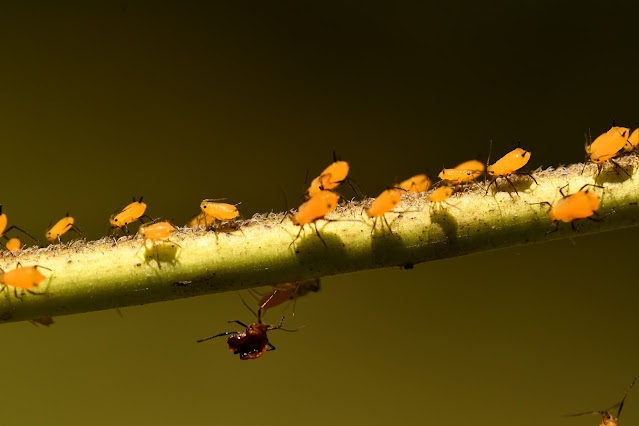Ben Caruthers sent me some photographs of aphids on his milkweed. The picture above was particularly interesting as it showed the aphid extruding wax from its cornicle (corn-ick-L). Another name for the organ is siphunculi, and yes, Googling can tell you how to pronounce it. Note to self- must get out of the house more often.
 |
| Aphid with cornicle wax - REK |
"A.F.G. Dixon was one of the first to propose a defensive function in 1958. A 1967 paper published in the journal Nature, “Defense by Smear” by John S Edwards more fully described the defensive function of cornice secretions. Edwards had collected aphids from the field with parasitoids stuck to the cornices. In laboratory observations, he noted that poking an aphid would induce it to release a droplet from the cornicle on the side that the poke was received. He found that droplets collected from aphids quickly crystallized. The droplets were capable of immobilizing predators." Living with cornicles
 |
| Ben Caruther's aphids and an immobilized unknown bug |
As you might expect the types of lipids that are excreted differ among aphid species. Some have proven to be alarm pheromones that send a signal to other aphids, causing them to drop from the plant to safety. We discussed the pheromones at length in this past blog Since then a lot more information has become available, some of which is in this blog.
===============
Everything else you might want to know about aphids is compiled in this link.
